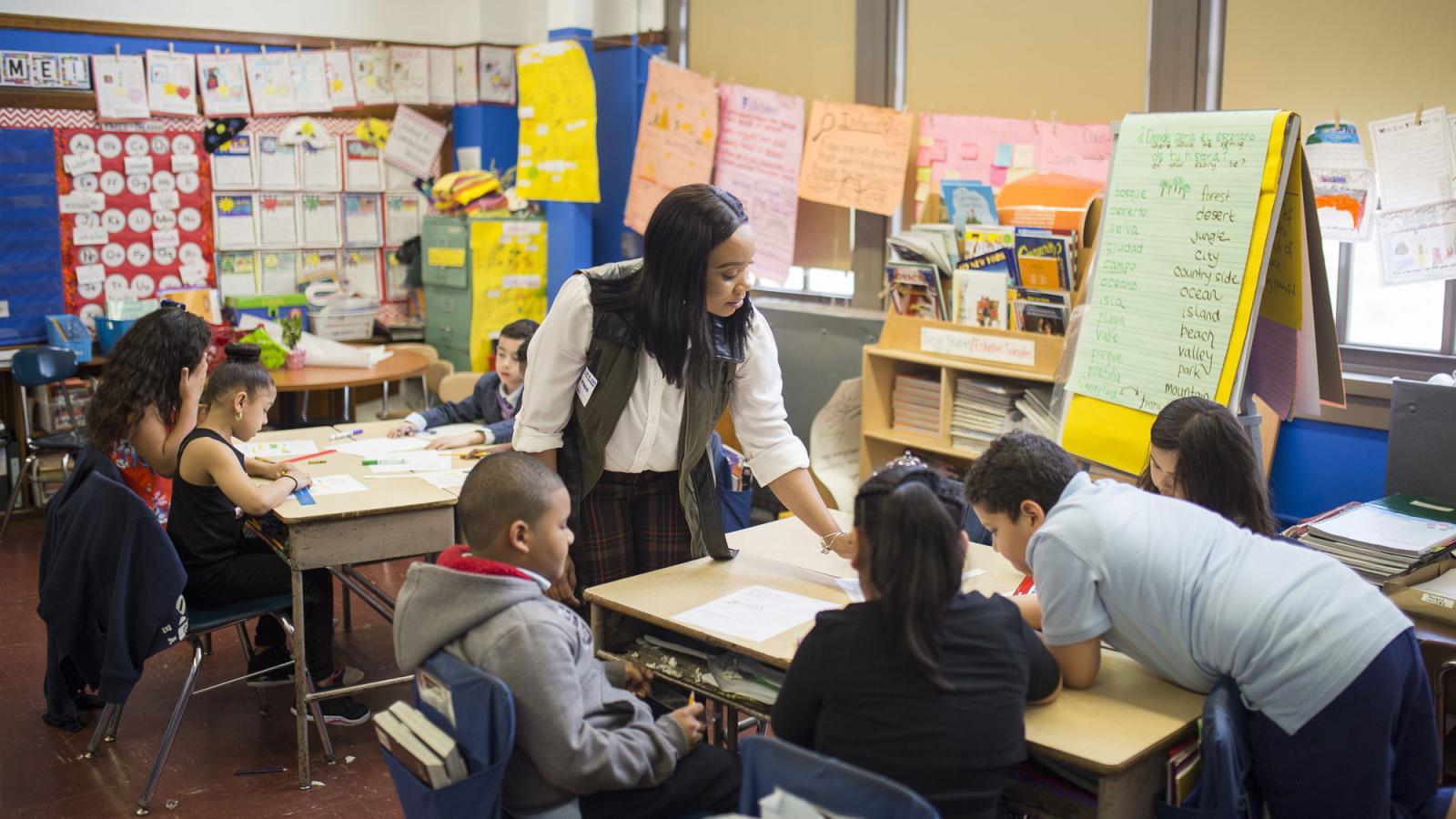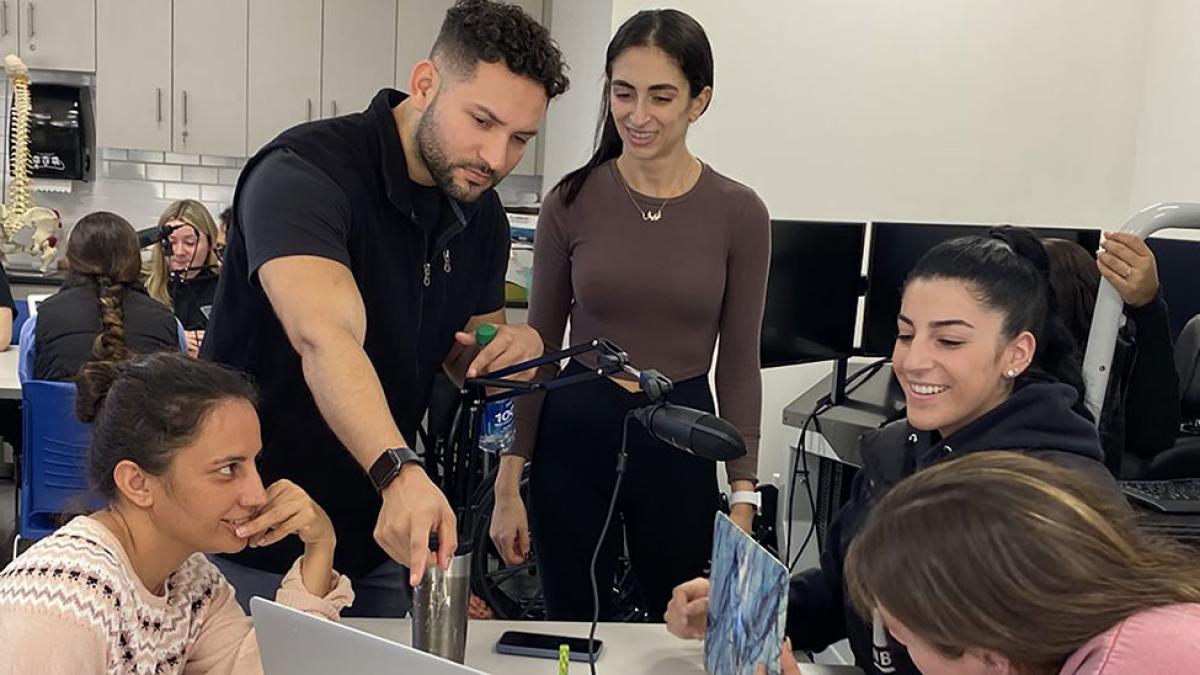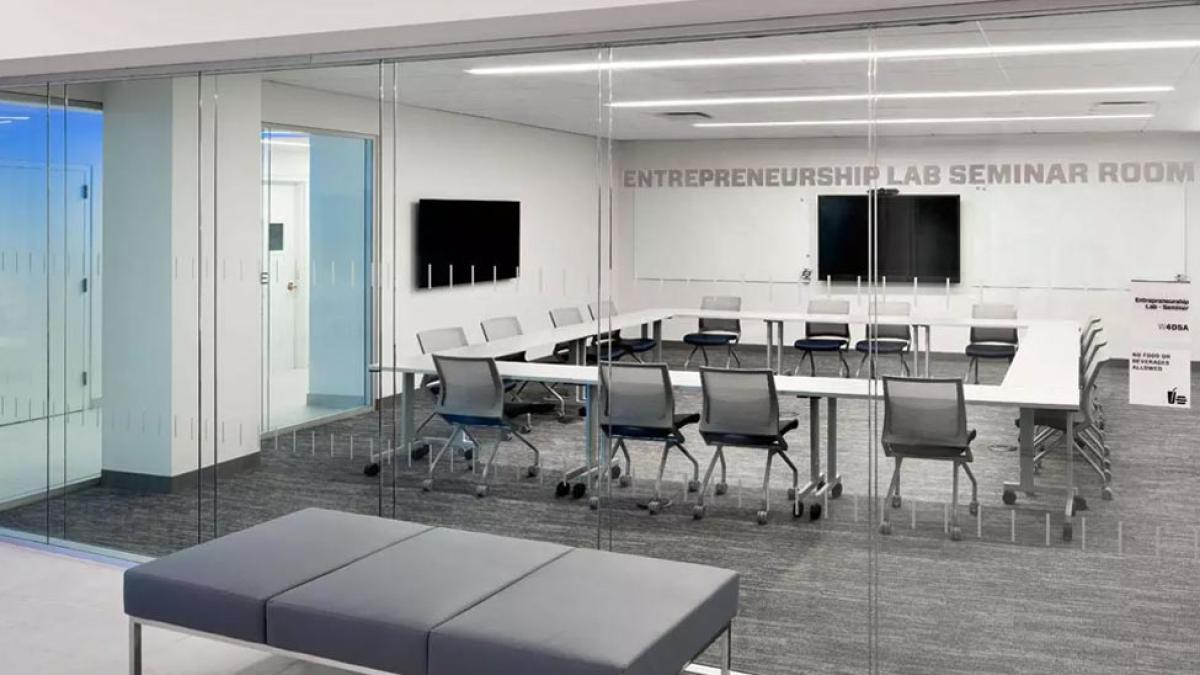Learning takes many forms. Thanks to the Office of Research and Graduate Education’s Classroom-Based Research Award, Occupational Therapy Professor Lisa Raymond-Tolan is adding student-created podcasts to her curriculum.
Getting Ahead of the Teacher Shortage

It’s not every day that a major public school district in the United States asks for your help and expertise.
Yet for Pace University and the School of Education, that’s exactly what has happened. And what started out as a simple request from a school district in a heavily populated area of Florida has blossomed into a vibrant interdisciplinary project housed right here at Pace, that is making considerable real-world impact.
The story begins about a decade ago, when Pace’s School of Education invested in mixed reality simulation technology, to serve as a complement for students’ work in the field as student-teachers. As SOE Professor Joan Walker, PhD, notes, this futuristic technology has proven to be quite helpful for teacher education, because it ensures that all pre-service teachers get exposed to certain classroom scenarios they might not have encountered in the field.
“The lab is great because what students experience in the field can vary quite a bit,” says Walker. “So, there’s a need for offering more consistency and giving our students a chance to confront some really common professional challenges that they’ll need to know how to address as educators.”
Through this technology, the School of Education, in conjunction with University Relations, was able to create short video clips—each of which focused on a specific teaching scenario, followed by correct and incorrect ways to approach that given situation.
For example, a student might be talking during an exam, and the clip would examine different ways to intervene, as well as the effectiveness of each method. These clips lived on YouTube, and served primarily as marketing materials for the School of Education.
Fast-forward to the present. A school district in Florida was looking for professional development tools for their growing population of temporary instructors and substitute teachers. Given the nationwide teacher shortage, adequate support for temporary instructors has become even more vital.
“As anyone who is reading the news focusing on public education can see, there’s a lot of turnover in the teaching profession right now, and a really strong need for temporary instructors as a result,” notes Walker. “Temporary instructors and substitute teachers have always been an important part of the workforce, but they’re especially critical now.”
“This is the definition of experiential learning.”
—Jennifer Pankowski, EdD
The school district came across Pace’s simulation videos and determined that they were exactly what they were looking for to help temporary instructors prepare for what they might encounter in the classroom. Realizing the value that these types of simulations could provide, they got in contact with Pace—and requested more episodes.
“They had a small grant, and they engaged us to make more episodes,” explains Walker.
Thus, the project began. Walker, alongside her colleague in the School of Education Associate Clinical Professor Jennifer Pankowski, EdD, and Dyson Film and Screen Studies Clinical Professor Gloria Vela, began to assemble a team. Pankowski, who had been working on cross-disciplinary education simulations using talent from the Pace School of Performing Arts for the past several years, was the perfect faculty member to take charge. Vela, who has been teaching at Pace for the past five years, has extensive career experience in film and television editing, commanded the visual storytelling and editing components as the post-production supervisor.
Together, they recruited four alumni, who were to be featured in and compensated for the project. Alumna Naya Rivera ’22 and current adjunct professor McEdwin Charles ’17 played the role of teachers; PPA alumna Sariah Thompson-James ’21 took charge as the immersion simulation specialist to lead the responses and actions of the student avatars; and alumna Madeline Allou ’22 served as the primary editor.
The team created eight original videos with specific scenarios that temporary instructors might encounter in the classroom—ranging from “Managing Classroom Disruptions,” to “Keeping All Students Engaged,” to “Apologizing to Reset the Tone.”
The videos were a mixture of Zoom recordings and simulation, posing creative editing challenges that Allou and Vela were excited to tackle.
“The way it was structured, it’s such an interesting way to tell a story, in the sense that the first example is not the best example,” says Vela. “It’s very engaging to watch.”
Allou, who served as the primary editor, found the opportunity to work with Zoom footage, as well as the ability to give back to Pace, among the highlights of working on the project.
“I enjoyed creating my own style for the videos,” says Allou. “Having that creative freedom is a really great aspect to have in a job. I also really enjoyed working for Pace, being an alumna now it was really awesome feeling connected to the school, even though my time learning there is over.”
On the educator side, Walker and Pankowski were impressed by the level of engagement that Naya and McEdwin brought to the project—suggesting and envisioning scenarios and responses that are most relevant to today’s student-teacher interactions, that Sariah, the interactor, was able to expertly build upon.
“The students are really connected to what’s going on in the field right now. They brought a lot of authenticity. The interactor, Sariah, picked up on that right away, and did a great job being an 11-year old,” adds Walker.
Walker, Pankowski, and Vela expressed their gratitude and enthusiasm for the opportunity to participate in this project, make a tangible impact in the field, and break out of departmental silos to create something truly innovative.
As Walker and Pankowski note, the interdisciplinary project is truly experiential learning at work.
“The project—involving different schools, students—there’s a lot to be said about when programs come together, that’s when we can create authentic spaces for the students to do the work,” said Walker. “I think that’s an example of what this project has been able to do.”
Another school district reached out to us, with all our cast of characters at Pace, we created something valuable,” added Pankowski. “This is the definition of experiential learning.”
More from Pace Magazine
The Pace Entrepreneurship Studio supports new startups, from ideation to funding—from conception to operation. Our mission is to teach you the "how" and to support the "what"—providing students and alumni with a complete blueprint for establishing successful businesses.
From amazing stats to stellar students and alumni, here are just a few of our favorite things.


